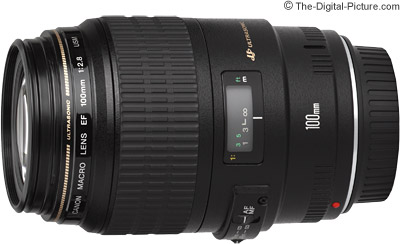

Image stabilization is an extremely valuable feature in any lens and even more so in a macro lens.
#Canon macro lens 100mm iso#
Its f/2.8 also helps deliver high quality images in low light conditions without having to resort to high ISO settings. It has 17 elements in 13 groups and a 9-blade aperture system and can thus deliver detailed images with a lovely background blur. The RF 100mm F2.8 L MACRO IS USM lens helps deliver incredibly high image quality, edge-to-edge, even wide open at its f/2.8 maximum aperture. Designed for utmost comfort and ease while capturing insects especially those that move around very frequently, this lens helps capture detailed images with minimal blurring.
#Canon macro lens 100mm series#
It can be used easily with any EOS R series camera. It is Canon’s first medium telephoto macro lens to offer a maximum magnification ratio of 1.4x, which means you can project images onto the camera’s sensor 1.4x larger than life-size. The Canon RF 100mm F2.8L Macro IS USM is the world’s first full-frame autofocus macro lens with a greater than life-size magnification, image stabilisation and control of the look of the bokeh. Here are 7 best Canon macro lens for insects photography. Unlike others, macro lenses have incredibly high reproduction ratios which is the ratio of subject size in reality and on a sensor plane, is similar or even greater.

With a magnification ratio of 1:1, these lenses will also pick up the micro patterns in the petals of flowers and deep colors of a wasp. Macro lenses typically feature a focusing distance of minimum of 12 inches or sometimes even lesser. Macro lens captures close distance photographs for those who wish to have close-ups of the miniature creations in nature like insects and flowers with incredible detail to light. Macro lenses are dedicated camera lenses with enhanced zooming capabilities. What is a macro lens and what is it used for? Without further ado, let’s get into the details. That way you don’t end up having made an ill bargain and regretting later on for the features you didn’t get right. We will also be discussing their features and how you can identify which lenses are best suited for your target photography needs. Now, there are several brands that offer their versions of macro lenses, however, in today’s article we’re going to cover the renowned brand “Canon”, known for their top rated macro lenses. To get a view of the miniscule beings of this earth, you need to go beyond your everyday gear. This includes, but is not limited to, food, plant, product, and wildlife photographers.Insect photography is not like your everyday vacation or landscape shooting, which most common use lenses can do well. Macro lenses are the go-to lenses for many different types of photographers. But the best macro lenses generally have a minimum focusing distance of no more than 30cm.

The exact distance depends on the lens’s focal length. It’s the closest distance the lens can be to a subject while maintaining focus. If the ratio is greater than 1:1, images will be larger than life, and fine details will be even more visible.Īnother critical factor to consider with macro lenses? The minimum focusing distance. That means the subject you are photographing is, at a minimum, the same size on the camera sensor as it is in real life. So, what makes a lens a macro? To be considered authentic macro lenses, they must have a magnification ratio of at least 1x (1:1). But the results will never be as sharp and breathtaking. Many people shoot macro photos without dedicated macro lenses. Macro lenses are lenses designed for macro shots-very close-up photography. And the plastic body doesn’t have weather sealing. But it doesn’t show chromatic aberration at f/2. And it can produce amazing pet portraits as well. The 85mm focal length works great for close-up portraits. The lens is another versatile option for mirrorless Canon users. This separate ring around the lens allows you to change settings such as ISO or aperture! It also has a super-quiet STM AF motor. The Hybrid IS compensates for camera shake during macro shooting. This makes the difference between shooting freehand or on a tripod. The image stabilization (IS) in this lens is incredible! It allows you to shoot with up to five stops of difference. But, it won’t be able to photograph tiny insects with amazing ease. This still provides a closer view of your subject than most lenses. But it only has a 0.5x max magnification. The Canon RF 85mm f/2.0 IS STM is described as a macro lens. If you buy a product through one of our referral links we will earn a commission (without costing you anything).


 0 kommentar(er)
0 kommentar(er)
